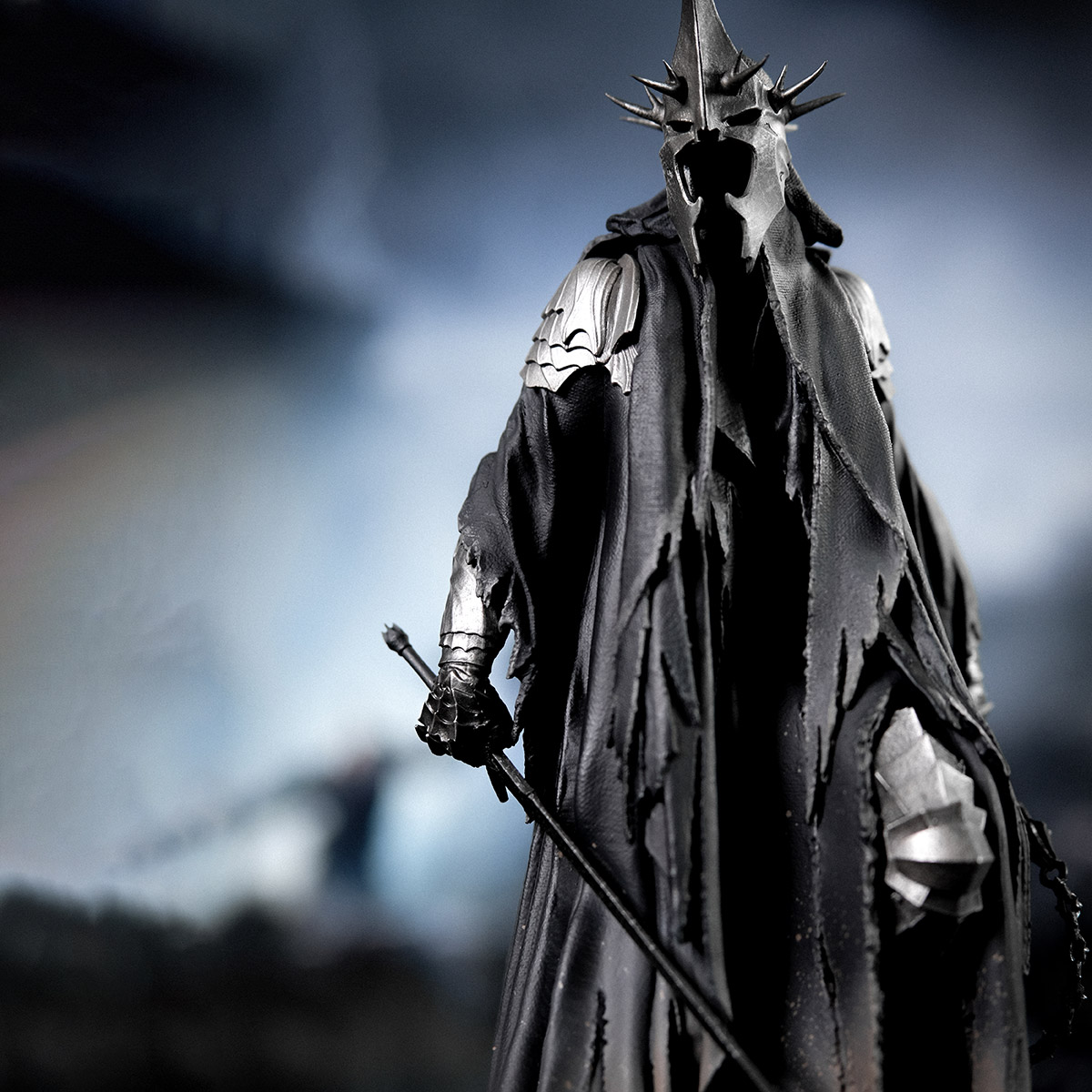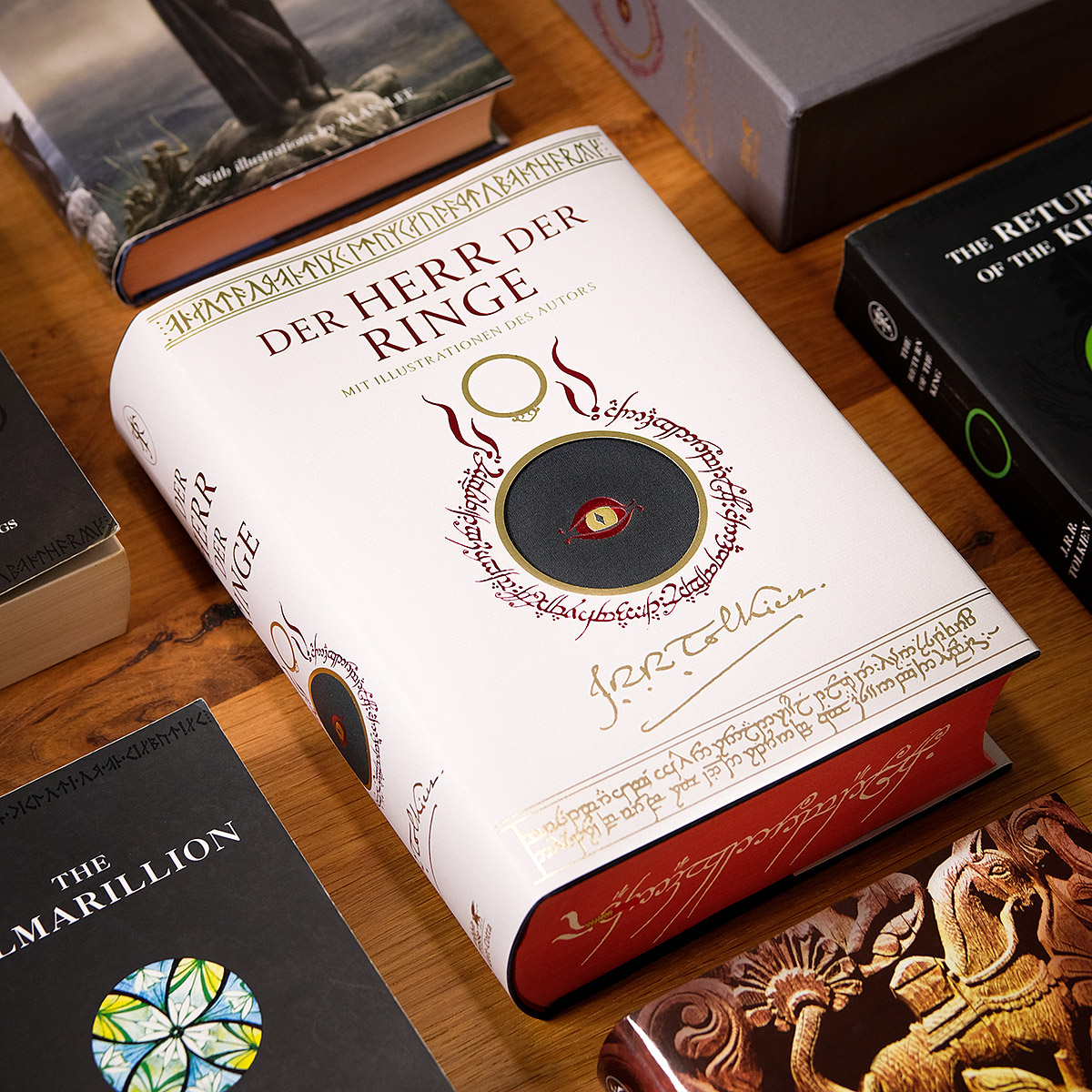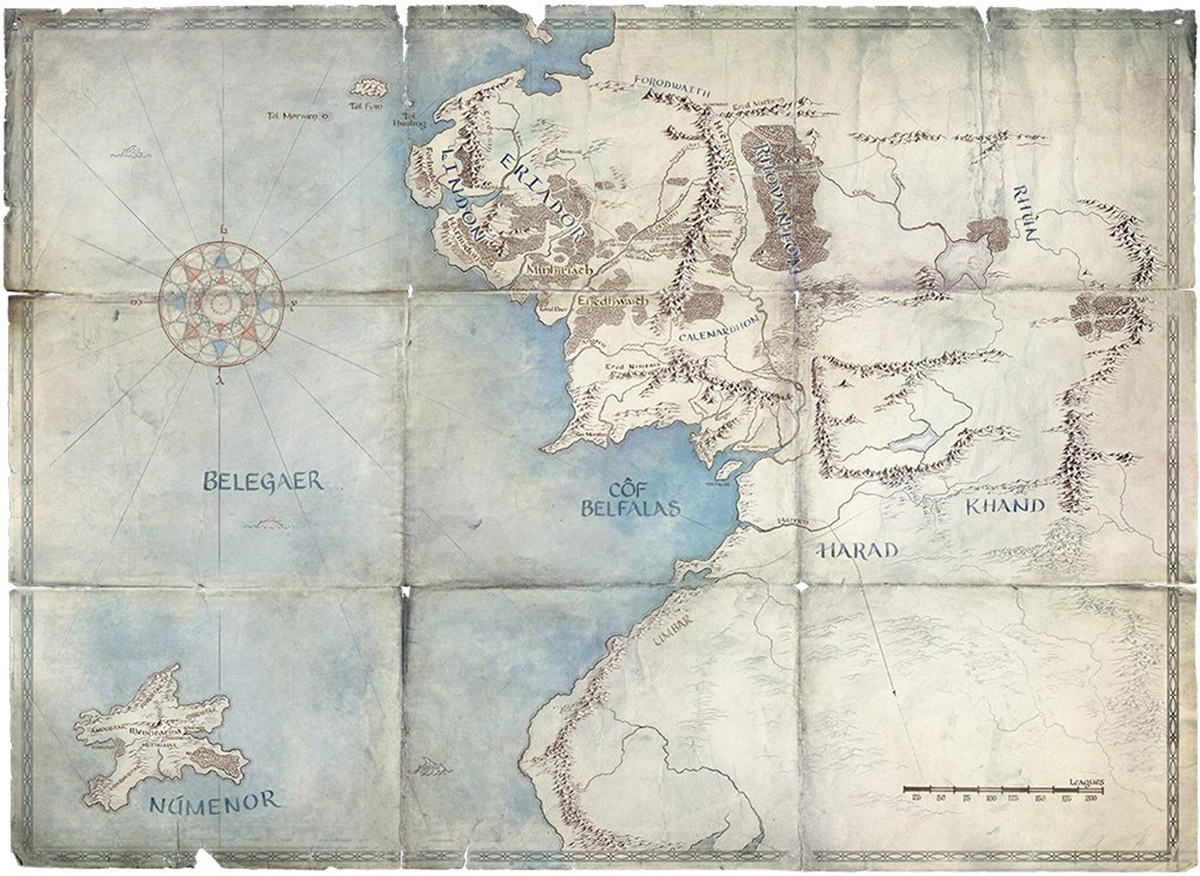
(Image © Amazon)
Everything You Need to Know About the Second Age
The Lord of the Rings is a success story like no other. The books by J.R.R. Tolkien are undisputedly the most important and, for many, the greatest fantasy work of all time. The film adaptation by Peter Jackson enjoys a similar status in the world of motion pictures, especially as the trilogy effortlessly lifted the fantasy genre out of its niche and profoundly influenced Hollywood. Well, and now Tolkien's world is set to conquer the realm of series...
With The Rings of Power, Amazon's film production department has taken on quite a challenge. Just for the (rather limited) rights, they shelled out $250 million, and on top of that, committed to producing five seasons, skyrocketing the investment amount to at least one billion dollars. And all that before a single episode has even been aired!
Perhaps the greatest risk, however, could be the story itself. Unlike The Hobbit or The Lord of the Rings, the series doesn’t revolve around the Third Age but rather the Second. While some familiar characters will appear, this period doesn't enjoy the same level of recognition as the Third Age – even though Tolkien described it quite extensively. Hence, we thought: Well, why not pack the most important facts about the Second Age into an article?
The Return of Sauron
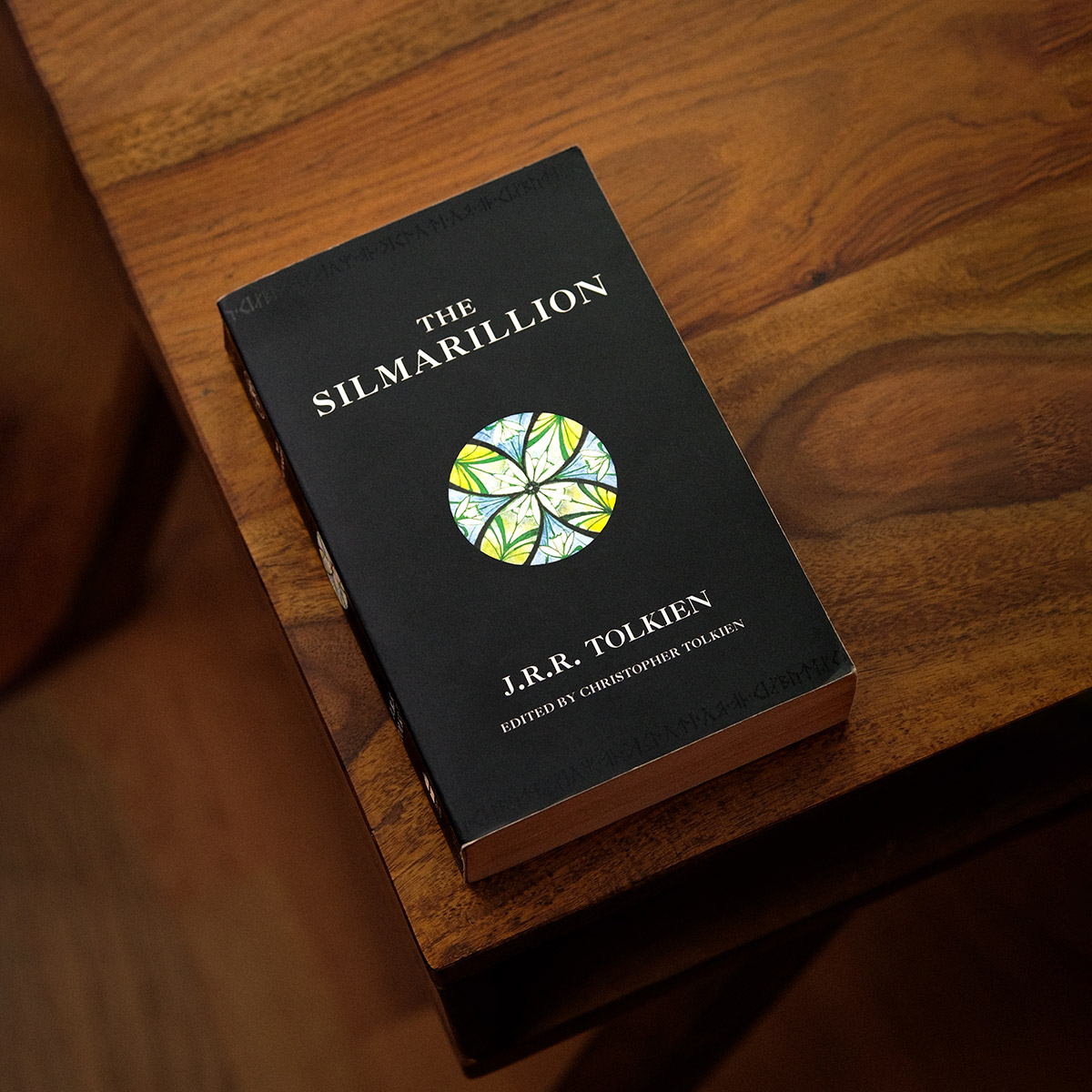
Melkor was the major villain of the First Age. However, his most important servant was Sauron, who played a significant role in three out of four known ages of Middle-earth.
The Second Age is quite long. To be precise, it lasted for 3,441 years. It began with the victory over Morgoth in the War of Wrath. Morgoth? War of Wrath? Hmm, it seems we can't completely avoid the First Age after all. In short:
The major villain of the First Age was Melkor, a rebellious Vala who opposed Ilúvatar (the creator of the Ainur, Elves, and Men) and became the origin of all evil. To make things a bit more confusing, Melkor later became known by another name, which is quite common in the history of Middle-earth. Anyway: Under the name Morgoth, this evildoer waged war against the Elves and Men. His most powerful servant was Sauron, a fallen Maia. After his master's defeat, Sauron kept a low profile for about 1,000 years before heading to Mordor and starting the construction of his fortress, Barad-dûr.
As the rightful successor to Melkor, a.k.a. Morgoth, Sauron, as it often happens, enjoyed subjugating all lands and continually expanding his power. For this, he needed allies. He easily manipulated and convinced the humans (more on that shortly), but the Elves were a different story. To gain their trust, he took the form of a beautiful, elf-like being and called himself Annatar, which translates to "Lord of Gifts". He presented himself as a envoy of the Valar and started forging the Rings of Power together with the Elves.
The Forging of the Rings
Sauron had learned the craft of forging from his former master Aulë, one of the influential shapers of Arda (the entire world, where Middle-earth exists). And Sauron was a masterful smith. In the guise of Annatar, he taught the Elves, and together they created the mightiest magical tools of Middle-earth. However, as we all know, the story didn't end there. Secretly, Sauron forged a master ring in the fires of Mount Doom, through which he could control all the other rings.
Unfortunately, Sauron wasn't the only one crafting magical rings in secret. The Elves ultimately weren't as trusting as they initially seemed. Although they initially worked exclusively under Sauron's guidance, after he returned to Mordor, the renowned Celebrimbor—who was responsible, among other things, for the inscription on the West-gate of Khazad-dûm—set about forging three rings of his own: Narya, Nenya, and Vilya. This turned out to be a really good decision since these Elven rings were never subject to the power of Sauron's ruling ring.
Sauron's War against the Elves
Sauron gave the Nine Rings to powerful kings of Men, who succumbed to the power of the One Ring and thus became Ringwraiths.
When the Elves, led by Celebrimbor, uncovered Sauron's betrayal, he claimed all the Rings of Power for himself. He seized the Nine Rings and some of the Seven Rings in the usual fashion: through force. Armed with these, his next move was to expand his dominion. He gave the Nine Rings to great kings, sorcerers, and warriors among Men, turning them into his obedient slaves – the Nazgûl. However, the plan failed with the Dwarves because, to put it bluntly, they were just too stubborn for it. More about the lives of the Dwarves can be found at the end of the article.
As Celebrimbor refused to surrender the Elven Rings to Sauron, the latter assembled a large army and invaded Eregion. Despite their excellent relations with the Dwarves in Khazad-dûm and other Elves from Lindon, the Elves were no match for Sauron's power. This resulted in the complete devastation of Eregion. Among the surviving Elves was Elrond, who subsequently founded the sanctuary of Imladris, known today as Rivendell. (Did we mention that different names for the same thing are common in Middle-earth?) Other survivors fled through the tunnels of Khazad-dûm to Lothlórien, but the Dwarves sealed their gates, preventing Sauron from pursuing the survivors – and thus the Elven Rings.
Sauron reached a temporary peak of his power and, why not? – bestowed upon himself the grand title of King of Men. This action drew the wrath of the proud kings of Númenor. And they were quite significant.

Elrond was among the survivors of the battle where Eregion fell. In the upcoming series, he will be portrayed by Robert Aramayo. (Image © Ben Rothstein/Prime Video)
Rise and Fall of Númenor
What is Númenor, actually? It's an island raised from the sea by the Valar at the beginning of the Second Age. Interestingly, Elros, the twin brother of Elrond, was the ruler of the city of Númenor. The Númenóreans, who in later ages were more commonly known as Dúnedain, were descendants of the Edain, the humans who came to Beleriand in the First Age and befriended the Elves. This friendship wasn't just fair-weather; it even withstood a war. The Edain supported the Elves in the fight against Morgoth, and as gratitude, they were granted a new home outside of Middle-earth, namely the island of Númenor.
Things went smoothly here for quite a while! The Númenóreans settled comfortably, became great sailors, engaged in trade with the people of Middle-earth, and so on. It could have all been so beautiful! However, the people of Númenor wanted more and more. They began founding their own realms on the west coast of Middle-earth and sought immortality—during this time, Sauron was focusing on the East of Middle-earth. Eventually, an inevitable conflict arose. The Númenóreans allied themselves with the Elves and managed—just like they did against Morgoth—to repel Sauron.
It could have, once again, meant the end of Sauron. But instead of finishing off the irredeemable scoundrel, the Númenóreans captured him. And because Sauron was not only clever but also incredibly charming, he managed to enchant the King of Númenor. He even became his advisor and persuaded the Númenóreans to worship Morgoth and speak against both the Elves and the Valar. Long story short: Númenor dared to invade Valinor with a massive fleet and attack the mighty Valar to forcibly seize the long-anticipated immortality. However, the plan went awry, and as punishment, Ilúvatar caused the entire island of Númenor to sink back into the sea.
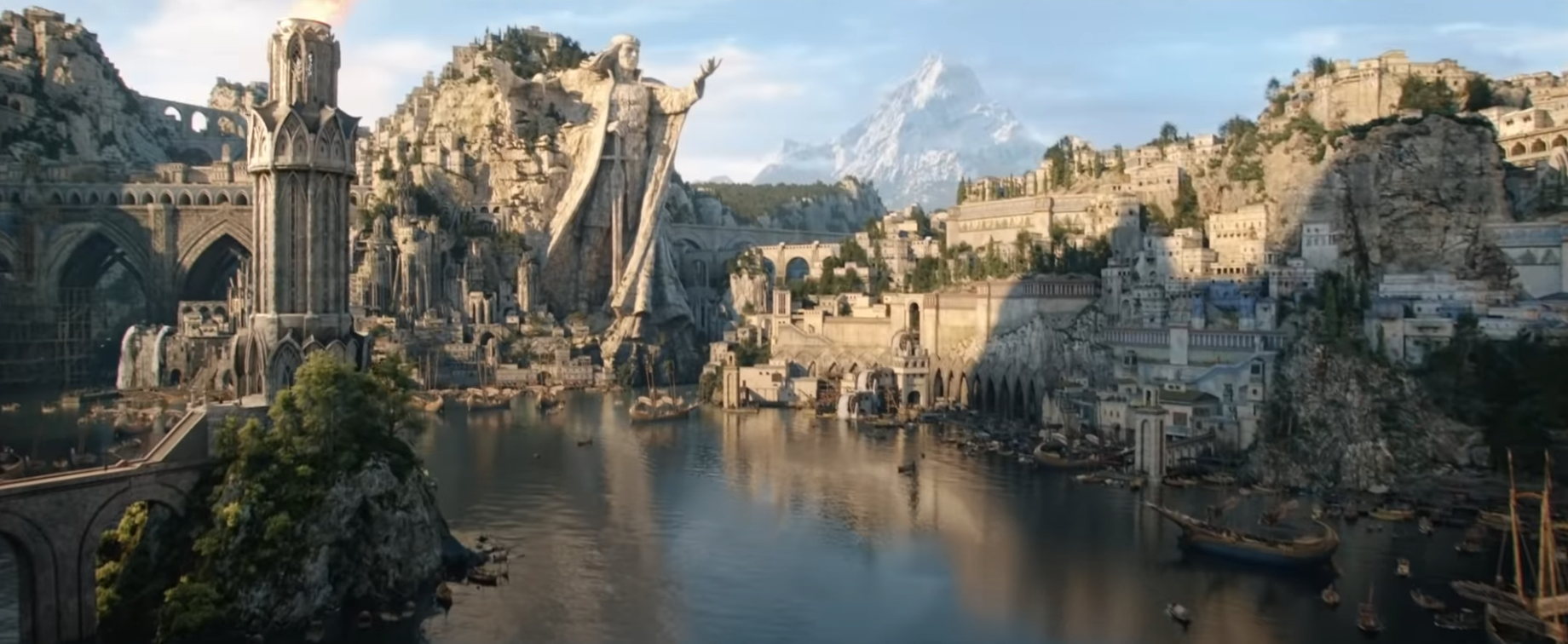
In the series The Rings of Power, we will likely experience Númenor in all its glory. (Image © Amazon Studios)
The Last Alliance
Although Númenor disappeared from the face of the Earth, there were survivors. Among them was Elendil, a name that should be familiar to Lord of the Rings fans, who escaped to Middle-earth and founded the exiled realms of Gondor and Arnor. Meanwhile, Sauron's body was destroyed, but not his spirit; he lost the ability to change his form freely. He fled once again to Mordor, where apparently everything was still largely in order. Well, for him, not for the rest of Middle-earth. And what does one do as a Dark Lord when a beautiful new kingdom arises at their doorstep? Of course, attack it! And so came the attack on Gondor.
Alone, the humans under Elendil and his eldest son Isildur wouldn't have stood a chance, but they allied themselves with the Elves, under the leadership of Gil-galad, forming the famous Last Alliance. What happened next, we know: Sauron was defeated, even though both Gil-galad and Elendil fell in battle. Isildur, however, managed to cut the One Ring from Sauron's hand using the shards of Narsil, supposedly costing Sauron his life once again. And because Isildur decided to keep the One Ring for himself, the Dark Lord was allowed to continue existing. But you already know this story...
Also Important: The Dwarves
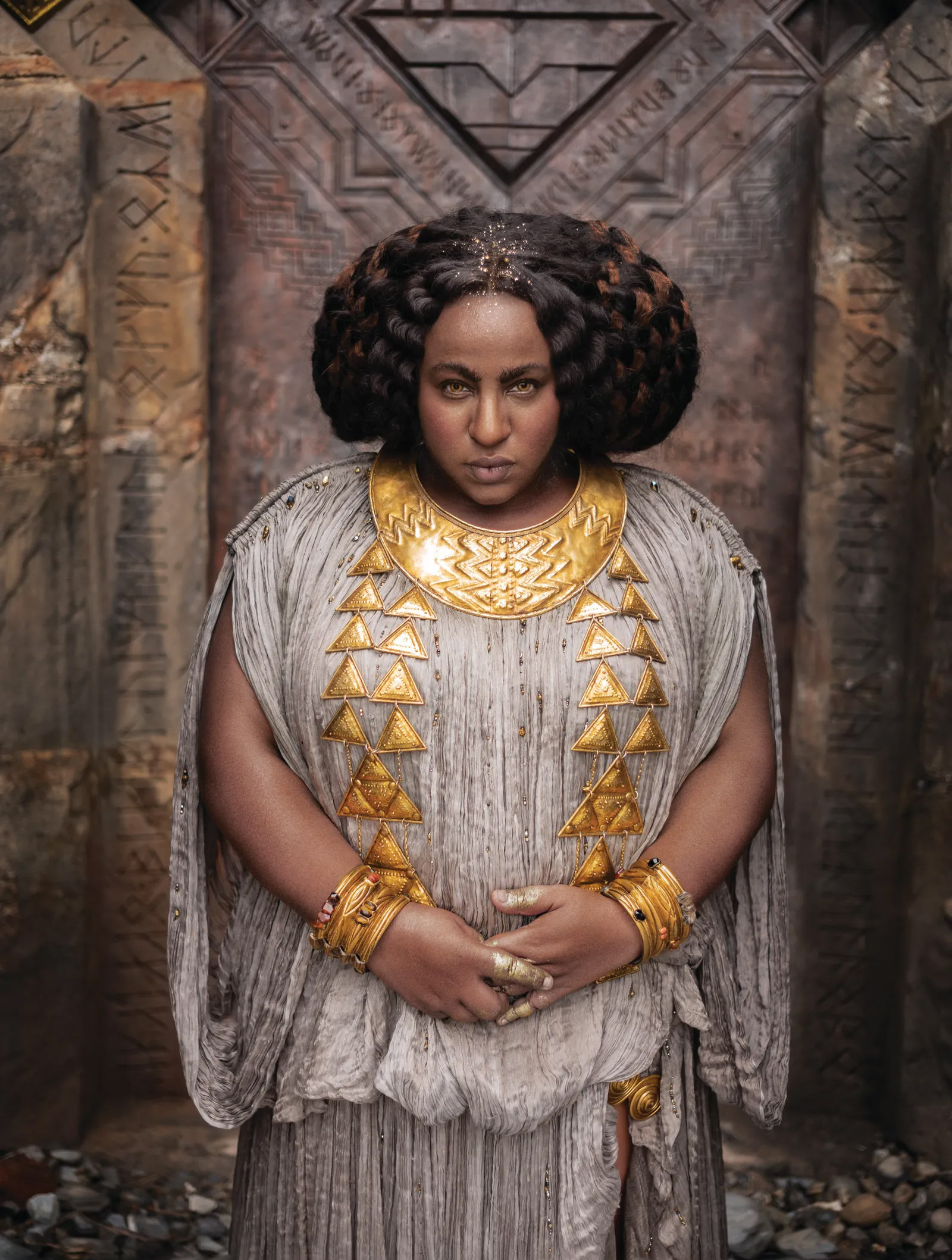
Stirred heated discussions among some fans: Dwarf princess Disa, who doesn't appear in Tolkien's works. We'll reserve our judgment until we've seen the series and look forward to seeing more of the dwarves. (Image © Ben Rothstein/Prime Video)
We know that the dwarves will play a larger role in the series The Rings of Power, so here are a few words about our born sprinters. During the Second Age, many dwarves migrated to Khazad-dûm. In The Lord of the Rings, we only know the underground city as a creepy tomb, filled from top to bottom with orcs and worse. However, during the Second Age, Khazad-dûm was a thriving economic force. One of the kings of the dwarves was Durin III, who maintained a close friendship with the Elves of Eregion. In general, the relationship between the two races was quite different from that in the Third Age.
As mentioned earlier, Sauron attempted to subdue the dwarf kings with the Seven Rings of Power, but even the Dark Lord couldn't overcome the stubbornness of the dwarves. Consequently, the dwarf rings ultimately played a rather subordinate role; they neither extended the lives of their bearers nor turned them into ringwraiths like the men – further fueling Sauron's hatred for the dwarves. Out of the seven rings, Sauron could only seize three; the remaining four were destroyed by dragonfire.
Otherwise, the dwarves supported their elven friends whenever the opportunity arose. When Sauron attacked Eregion, Durin III dispatched a force without which Elrond probably wouldn't have survived. However, after the destruction of Eriador, the dwarves completely withdrew into their mines – and stayed there. Even in the war of the Last Alliance, very few dwarves took part.
The Most Important Events
| 1 | The Elves establish the kingdom of Lindon and the Grey Havens |
|---|---|
| 32 | The Valar appoint Elros (Elrond's twin brother) as the ruler of the island realm of Númenor |
| 600 | The Númenóreans first journey to Middle-earth |
| around 1000 | Sauron starts building his realm in Mordor |
| 1200 | Sauron, disguised as Annatar, gains the trust of the Elves of Eregion and teaches them craftsmanship |
| 1500-1590 | The Rings of Power are forged |
| around 1600 | Sauron forges the One Ring, and the fortress of Barad-dûr is completed |
| 1693-1700 | Sauron wages war against the Elves of Eriador |
| 1697 | After the destruction of Eregion, Elrond establishes Imladris, also known as Rivendell |
| 1700 | With the help of Númenor, the Elves manage to repel Sauron |
| around 1800 | The Númenóreans start founding their own realms in Middle-earth; Sauron focuses on the East of Middle-earth |
| 3262 | Sauron comes to Númenor as a captive, but his influence grows; he even becomes an advisor to the king |
| 3319 | Númenor attacks Valinor to claim immortality; Ilúvatar sinks Númenor into the sea |
| 3320 | Elendil and his sons escape destruction and found the kingdoms of Arnor and Gondor in Middle-earth |
| 3429 | Sauron attacks Gondor |
| 3430 | Men and Elves form the Last Alliance |
| 3441 | Sauron is defeated, Isildur takes possession of the One Ring |

